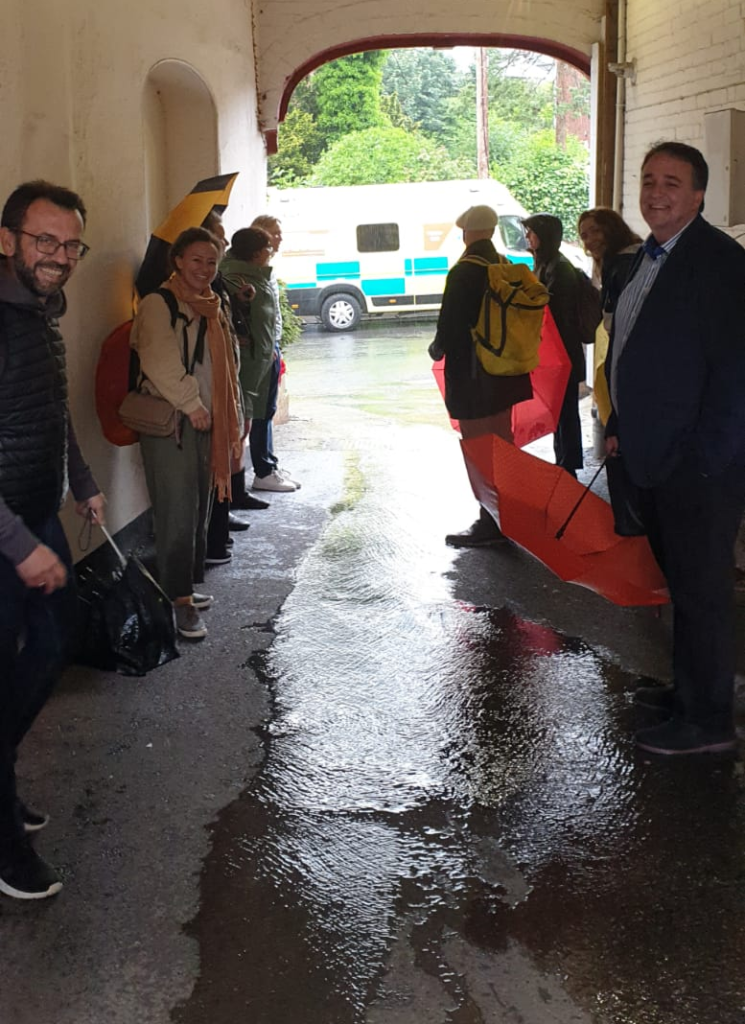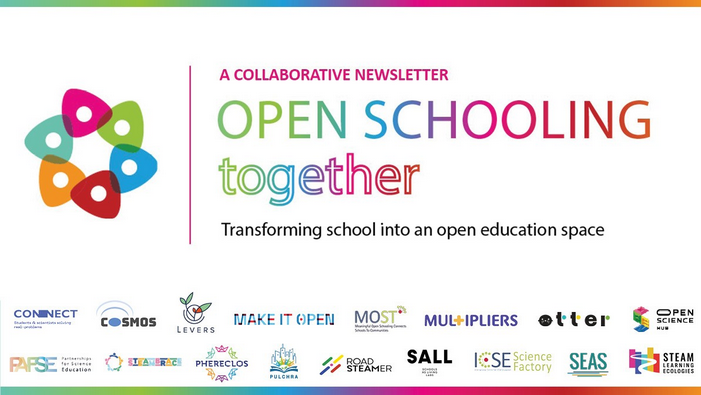Trying to reimagine the traditional meeting workshops, the latest Road-STEAMer consortium meeting intentionally embraced innovation, and transformed frontal presentations into dynamic, interactive experiences. To break learning and teaching conventions, we focused on engaging activities that clearly reflected our criteria for STEAM practices. All partners designed these activities to truly “walk the talk” and fully embody the approaches we have researched and identified. Picture participants walking and talking through ideas, dancing icebreakers, and collective sense-making and collaboration towards shared goals. These are only a few snapshots of our consortium meeting in Exeter from 21 to 23 May 2024!
So, what did we do?
Collaboration
All of the workshops relied heavily on collaboration among participants to achieve common goals – specifically, we work together to advance on some project activities. Probably the best example of this is from the second day, when we tackled an upcoming task that we were not clear on how to bring forward. Instead of untangling the (metaphorical) yarn, each perspective shared by different participants seemed to add new layers of complexity. About half an hour into the discussion, there was palpable despair that we would ever agree on how to proceed, let alone get it done. But then, we split into smaller groups and tried to find consensus on what would be a feasible next step given the complexity and limitations we had discussed. And then, we tackled the one after that. Barely thirty minutes later, when we regrouped in as plenary session, a methodology had emerged, which only needed a few tweaks to become operations. Looking around the room, tension had evaporated, giving way to smiles and sighs of relief.
Disciplinary inter-relationships
Collaboration also rested on a commitment to disciplinary interrelationships on an equal footing. Not only participants come from a range of different backgrounds – astronomy, design, performative arts, science communication, psychology, computer engineering, just to name a few. We also work in a variety of settings (from academia to NGOs) and have different roles, with some even wearing multiple “hats”, such as researcher and dancer. And yet despite all this diversity – or more likely, thanks to it – we all share a commitment to improving education, and bring our multifaceted perspectives and contributions to this goal. And it is perhaps fitting that the most inspirational celebration of disciplinary inter-relationships during the two days in Exeter did not take place during the consortium meeting, but at a side event – a dialogue with STEAM practitioners and teachers-in-training. There, guest of honour and Road-STEAMer advisory board member Prof. Pamela Burnard gave a passionate speech, inviting all to overcome the artificial distinction between arts and science, and reminding us of the importance of “polymaths” – people like Leonardo Da Vinci whose excellence cannot be contained within disciplinary boundaries. This inspiring speech gave deeper meaning to the criterion, and it set the stage for the remainder of the consortium meeting.
Thinking-making-doing
Throughout almost all the consortium activities, participants actively collaborated by co-creating mind maps and leaflets with post-its and notes, which greatly enriched our discussions. Whether working in groups or individually, everyone contributed to a lively exchange of ideas. We shared our greatest achievements, brainstormed next steps, crafted STEAM policy recommendations, and created a timeline situating the Road-STEAMer project within a broader context of global challenges, technological advancements, and educational policies. This last exercise facilitated a general and clearer vision of what the role of Road-STEAMer is and how its research outcomes can be deployed in the short- and medium-term.


Creativity
Creativity took the spotlight with our session “Communicate an outcome/result/highlight”. We split into groups and were tasked with creatively conveying project highlights (our first policy brief, and the first or latest infographics) by drafting content via diverse channels like TikTok videos, radio commercials, and social media posts. This playful activity fostered increased awareness of engagement, allowing participants to imagine what the key message could be. By thinking outside the box, they effectively communicated key messages, showcasing the creativity and dynamism that drive our STEAM project forward. This exercise not only highlighted project outcomes but also underscored our commitment to embedding creativity in all our practices.
Real-world connection
We also emphasised the idea that Road-STEAMer is not a stand-alone initiative detached from the external world. The project consortium contributed to feeding in a strategic timeline featuring, in parallel, project-related highlights and relevant external world events and workshops. In this way, we identified connections between internal outcomes and external hubs to further promote our results and place them under the right spotlight.
Inclusion/Personalisation/Empowerment
At our consortium meeting, we made sure everyone felt included and empowered. Whenever feasible, we had hybrid workshops to give a voice to colleagues that for various reasons were not able to travel – most notably our partners from the Junior Academy of Science of Ukraine. One of these workshops was the collaborative assessment of 40 STEAM practices mapped and analysed during our project. In small groups, we reviewed and rated different practices against the Road-STEAMer criteria, trying to find consensus on a set of scores – though disagreement was possible. Everyone shared their views and expertise, but most importantly, the thought process behind the attribution of a score. Eventually, we came out of it with a series of radar diagrams to visualise the variety of STEAM approaches, and a deeper understanding of Road-STEAMer’s own framework. This fun and collaborative approach showed that every voice was considered, helping us all work towards our shared goal and feel truly valued in the process.
This approach to consortium meetings brought our work to the forefront, embodying the core values of our project, so that every moment was truly enjoyable, inspiring and productive. In all fairness, this switch required substantial preparatory work in the months leading up to it, and full commitment from all involved partners and especially task leaders. It was much more demanding than putting together a few slides, but the advantages were clear: we set ourselves up for success by working together on what needed to be done, instead of looking back at recent accomplishments. We left tired, yet energised.
And, in truly British style, there had to be rain, prompting us to bond over sharing umbrellas and seeking shelter under doorways.






